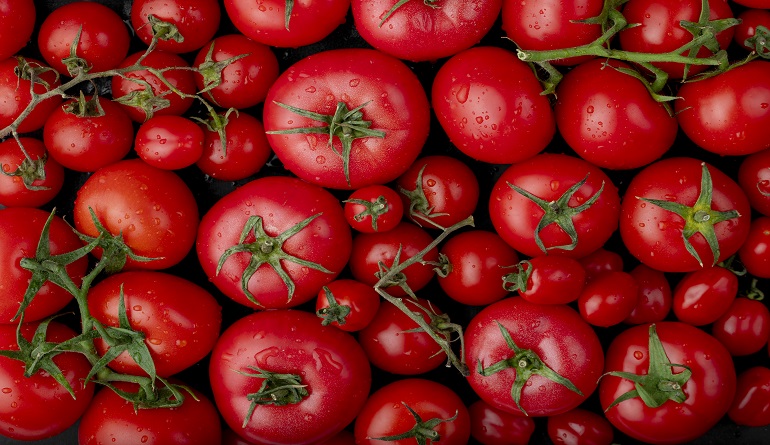
ATM News Network:
The tomato market has fallen and the prices of the berry has dropped
significantly, but only in wholesale market. The Tomato created history in
country by surpassing the petrol, vegetable oil and other essentials prices last
season. The prices of Tomato had reached three almost Rs 80 to 100 in retail
market. The tomatoes which were from Rs 60 to 80 per kg are now fetching Rs
30 to Rs 50 per kg in Nashik while the Mumbaikars are paying Rs 60 onwards.
In the starting of the year the farmers were getting only Rs 3 per kg rate in the
wholesale market. Now, the farmers are getting Rs 300 to Rs 400 rate per crate
of 20 Kg that is about Rs 20 per KG, but it is only after sorting of the best
quality tomatoes. The farmers’ crop is getting Rs 5 to Rs 15, depending on the
size, colour, and type of tomato. If we draw a overall cost of production of
tomatoes on acres basis; With minimal expenses, the farmer spends about Rs
10,000 on saplings or seeds, Rs 4,000, fertilizers and pesticides Rs 40,000,
harvest labour charges are about 10,000. The overall cost is about Rs 64,000. In
this Rs 64K and one acres of land the farmer gets produce of about five tonnes.
If we break it down to per kg, the cost is about Rs 12.8.
Then how the prices of tomatoes are such high in retail? If we go back to the
start of the year the farmers were getting only Rs 3 to Rs 10 per Kg rate in
wholesale market from the traders. While the prices in retail market or the
final consumer was paying Rs 20 to Rs 40 per Kg. The farmers were facing
tremendous loss. But, due to shortage in all over the country of tomatoes, low
production in other crop pockets, the tomatoes of Nashik were high on
demand. For the first time the farmers were getting good price for their
produce and the wholesalers too fetched good returns. The climate factor has
also played a crucial role. Due to unseasonal rains, constant change in the
weather conditions have damaged the previous crop. The supply in the market
is currently low and the demand is constant, creating room for making profit
for the mediators.
Farmer from Makhmalabad of Nashik Kailas Malode, explained, “The farmers
get good price only if there is shortage otherwise we were facing tremendous
losses. If we calculate the prices, we have to face 10 percent loss in rejection
after sorting of the produce, 10 percent in labour, 20 percent in transport, but
due to increased fuel prices the transportation cost has increased. And final 10
percent is commission. If the crate prices are Rs 100 we are only getting Rs 50
out of it.”
The Sharad Pawar Market at Peth Road that is Nashik market fetch about
60,000 crates. The Pimpalgaon market gets 50,000 crates, Khori Phata market
50,000 crates Dindori market 50,000 crates, and Nashik APMC gets 50,000
crates daily. It is about 2.5 lakh crates that is about 400 tones. The daily
turnover of the Nashik for tomatoes is about 75 lakhs. Trader PS Baba said,
“The traders to have too have to cut about 50 percent of their profit for
rejection, transportation, commission, and damages. Due to these factors the
end product which the consumer gets is priced high than the actual cost. The
perishable nature of the product makes it more expensive.”